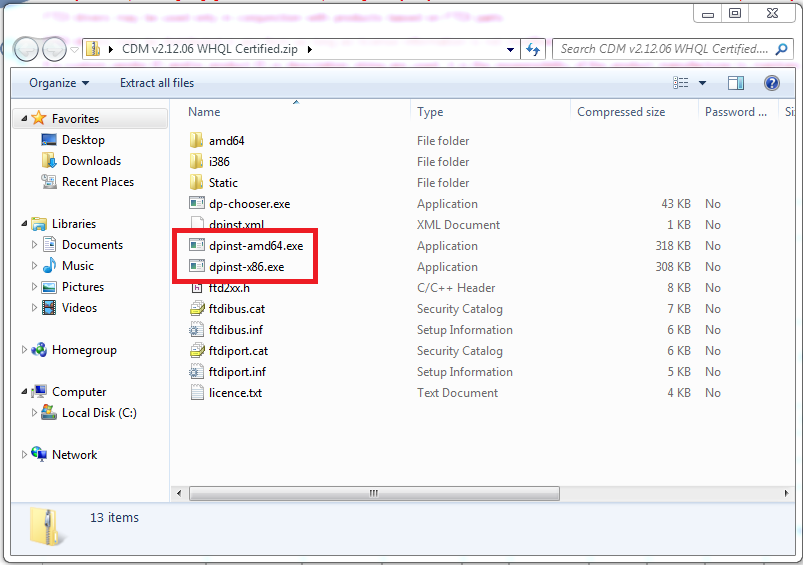- It is most-commonly used in Driver Package Installer (DPInst) developed by Sony Mobile Communications. It uses the EXE file extension and is considered a Win64 EXE (Dynamic link library) file. DPInst64.exe was initially released with 3DP Chip 17.11.1 on for the Windows 10 Operating System.
- Dpinst.exe 64 bit driver windows 7. Tuesday, August 24, 2010 8:16 PM. Answers text/html 8/26/2010 5:25:04 AM Leo Huang 1. Sign in to vote.
Dpinst.exe 64 Bit Windows 10 Download



Aug 15, 2013 Windows 8.1 Pro Computer type PC/Desktop System Manufacturer/Model Home made CPU AMD Ryzen7 2700x Motherboard Asus Prime x470 Pro Memory 16GB Kingston 3600 Graphics Card(s) Asus strix 570 OC 4gb Hard Drives Samsung 960 evo 250GB Silicon Power V70 240GB SSD WD 1 TB Blue WD 2 TB Blue Bunch of backup HDDs. Mar 17, 2011 The first release in the Windows 10 Operating System for DPInst.exe was on inside Driver Booster 7.0.2.435. The latest file update released for IObit Toolbox 1.2 was on file version 2.1.
| File Info | Description |
|---|---|
| File Size: | 664 kB |
| File Modification Date/Time: | 2020:01:28 16:58:55+00:00 |
| File Type: | Win64 EXE |
| MIME Type: | application/octet-stream |
| Machine Type: | AMD AMD64 |
| Time Stamp: | 2006:11:02 09:06:09+00:00 |
| PE Type: | PE32+ |
| Linker Version: | 8.0 |
| Code Size: | 529408 |
| Initialized Data Size: | 146944 |
| Uninitialized Data Size: | 0 |
| Entry Point: | 0x6bd3c |
| OS Version: | 6.0 |
| Image Version: | 6.0 |
| Subsystem Version: | 5.2 |
| Subsystem: | Windows GUI |
| File Version Number: | 2.1.0.0 |
| Product Version Number: | 2.1.0.0 |
| File Flags Mask: | 0x003f |
| File Flags: | Private build |
| File OS: | Windows NT 32-bit |
| Object File Type: | Dynamic link library |
| File Subtype: | 0 |
| Language Code: | English (U.S.) |
| Character Set: | Unicode |
| Company Name: | Microsoft Corporation |
| File Description: | Driver Package Installer |
| File Version: | 2.1 |
| Internal Name: | DPInst |
| Legal Copyright: | © Microsoft Corporation. All rights reserved. |
| Product Name: | Driver Package Installer (DPInst) |
| Product Version: | 2.1 |
✻ Portions of file data provided by Exiftool (Phil Harvey) distributed under the Perl Artistic License.
-->Starting in Windows 10 Version 1607 (Redstone 1), the Driver Install Frameworks (DIFx) tools (Difxapi.dll, Difxapp.dll, Difxappa.dll, and DPInst.exe) are deprecated and are no longer included in the WDK.

_16uHeKHry2.png?auto=compress%2Cformat&w=680&h=510&fit=max)
Instead, we recommend providing your driver package as a standalone driver package that does not require an installer. This is a self-contained package that adds its own settings or configuration that it needs to function correctly, rather than depending on an installer to modify system state that the driver package may depend on. Standalone driver packages are required in order to support driver package scenarios such as distributing the driver package through Windows Update and adding the driver package to an offline image. We recommend publishing a standalone driver package to be delivered through Windows Update to systems that your hardware is plugged into. The first step to publishing the driver package on Windows Update is to submit your driver package to the Windows Hardware Dev Center.
If you choose to use DIFx anyway, you must use an older WDK to get the right tools. The following caveats apply:
- If your driver package specifies only TargetOSVersion values of Windows 8.1 or later, you cannot use the DIFxApp MSI custom action (
Difxapp.dllandDifxappa.dll) due to DIFxApp's dependency on GetVersionEx, an API that changed starting in Windows 8.1. TargetOSVersion is specified in the INF Manufacturer Section. DIFxApp exposes MSI custom actions such as MsiProcessDrivers, MsiInstallDrivers, and MsiUninstallDrivers. If your driver package specifies TargetOSVersion values of Windows 8.1 or later, you cannot use these custom actions in your MSI. - Starting in Windows 8.1, applications that link to
Difxapi.dllmust contain an app manifest targeting the OS version on which the application is intended to run. This is due to DIFxAPI's dependency on GetVersionEx, an API that changed starting in Windows 8.1. For more on changes to GetVersionEx in Windows 8.1, see Targeting your application for Windows. - If your driver package uses the BuildNumber part of TargetOSVersion (introduced in Windows 10, version 1607 (Build 14310 and later)), you cannot use the DIFx tools with that driver package. The DIFx tools do not support BuildNumber targeting.
- Use DIFx version 2.1, which is available in the Windows 7 WDK through the Windows 10 Version 1511 WDK. Although a DIFx version of 2.1 was available in earlier versions of the WDK, it was not compatible with Windows 7 and later versions of Windows.
Although it's no longer being updated, you can find API reference documentation for DIFx at Difxapi.h. If you are using the DriverPackagePreinstall, DriverPackageInstall, and DriverPackageUninstall APIs, consider switching to DiInstallDriver and DiUninstallDriver.
Dpinst.exe 64 Bit Windows 8 Download
If you still need a custom installer to install your driver package, use either the PnPUtil command line tool or a custom installer that calls driver installation functions.
Dpinst.exe 64-bit Download
Similarly, if you need the custom installer to uninstall the driver package, use either PnPUtil or a custom installer that calls DiUninstallDriver or SetupUninstallOEMInf.